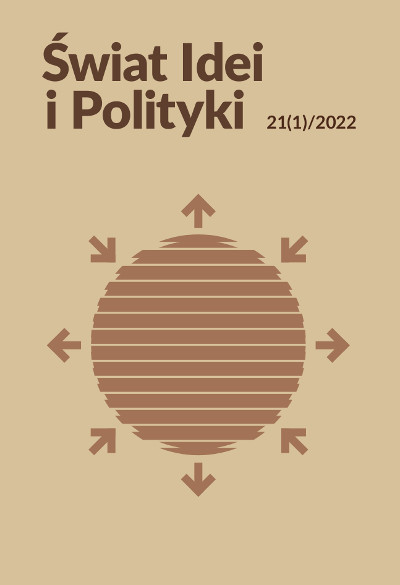Information architecture on websites of chosen federal American agencies: CIA, DEA, and FBI
DOI:
https://doi.org/10.34767/SIIP.2022.01.06Keywords:
CIA, DEA, FBI, IA, labeling systems, navigation systems, organizational systems, search systemsAbstract
The purpose of this article is an attempt to verify the hypothesis that the websites of Central Intelligence Agency (CIA), Drug Enforcement Administration (DEA),and Federal Bureau of Investigation(FBI),as modern communication technologies of federal American agencies are qualitatively good in terms of information architecture (IA) within user interface (UI).The United States is a world power and should be a model for other countries.CIA,DEA, and FBI are powerful, famous institutions, strongly promoted not only by American politics but also pop culture. The high quality of federal American agencies’ websites is important to create good image of these institutions, as their activities are secret and websites are one of sparce public communication channels, necessary to stay in contact with users.The IA research (i.e. research of four systems: organizational, labeling, navigation and searching systems) is needed to check if access to information on the websites is easy enough for users and if they were designed taking into account all the principles of functionality. The research methodology includes comparative analysis and qualitative assessment of the IA and own observations. The article is characterized by a special cognitive value as to the knowledge of the author, no scientific publication has been published on this subject yet.
References
Dade-Robertson, M. (2011). The Architecture of Information: Architecture, Interaction Design and the Patterning of Digital Information. London: Routledge.
Davis, N. (2010). Information Architecture, Black Holes and Discipline: On Developing a Framework for a Practice of Information Architecture. Bulletin of the American Society for Information Science and Technology, 36(6), 25–29. DOI: 10.1002/bult.2010.1720360608.
Dijck Van, P. (2003). Information Architecture for Designers. Structuring Websites for Business Success. Mies.: RotoVision SA.
Ding, W. & Lin, X. & Zarro, M. (2017). Information Architecture: The Design and Integration of Information Spaces, Second Edition. Edinburgh: Springer Cham. DOI: 10.2200/S00755ED2V01Y201701ICR056.
Głowacka, E. (2016). Propozycja modelu badań funkcjonalności serwisów WWW bibliotek cyfrowych opartego na zasadach architektury informacji. Biblioteka Nostra. Śląski Kwartalnik Naukowy, 2(44), 23–32.
Kosobucka, P. (2020). Architektura informacji a synestezja – rozważania teoretyczne i przykłady zastosowania w praktyce. Toruńskie Studia Bibliologiczne, 2(25), 9–28.
Osińska, V. (2014). Rola mechanizmów wizualizacyjnych w architekturze informacji. Toruńskie Studia Bibliologiczne, 6, 2(11), 81–96. DOI: 10.12775/TSB.2013.023.
Rosenfeld, L. & Morville, P. & Arango, J. (2015), Information Architecture. For the Web and Beyond. 4th Edition. Sebastopol, CA: O’Reilly.
Roszkowski, M. (2004). Architektura informacji w serwisach hipertekstowych. Zagadnienia Informacji Naukowej, 2, 13–29.
Seddighi, H.A. (2021). An Information Architecture Evaluation Framework for Websites. Iranian Journal of Information Processing and Management, 36, 4. DOI: 10.52547/jipm.36.4.995.
Skórka, S. (2021). Nauka o architekturze informacji: koncepcja dyscypliny naukowej. Zagadnienia Informacji Naukowej – Studia Informacyjne, 59(1), 7–28. DOI: 10.36702/zin.720.
Sosińska-Kalata, B. (2013). Obszary badań współczesnej informatologii (nauki o informacji). Zagadnienia Informacji Naukowej – Studia Informacyjne, 51(2), 9–41. DOI: 10.36702/zin.600.
Wurman, R.S. (1997). Information Architects. New York: Graphis Inc.
Wurman, R.S. (2017). UnderstandingUnderstanding. Pennsylvania: Generic.


